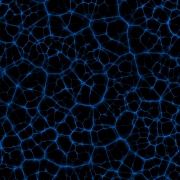Fascia, the super organ?
Fascia has been discussed at length in recent years! What is it really about this tissue that fascinates us?
Generally speaking, fasciae are considered a passive contributors to biomechanics behavior. In general, fascia is more often than not considered a relatively inert tissue whose role is passive in biomechanics dynamics.
There is evidence, however, of a more active role of the fascia, namely that it could actively contract. For example, there is indeed a contraction of the fascia in cases of palmar fibromatosis and in the context of hypertrophic scars.
Where do these contractions come from?
It is now accepted that these contractions originate from myofibroblasts. These myofibroblasts happen to be found in many human tissues. There are many, for example, in the thoraco lumbar fascia.
Conclusion
There is a lot of talk about this super facial tissue but, so far, we do not really say much, considering the range of therapeutic methods that exist that supposedly target this tissue.
Until now, we can not demonstrate that it is indeed the fascia that we address with these methods.
There is one thing that we know: we put our hands on the body and touch the skin. The fascia is given many virtues but it is perhaps through the mobilization of skin tissue that we create creating changes at the physiological level.
https://www.kinesport.info/Le-fascia-est-capable-de-se-contracter-activement-et-d-influencer-ainsi-la-dynamique-musculo-squelettique-Une-enquete_a4645.html?fbclid= IwAR1Xwr2o9O4bpt6Chj8Jg8Z3gXCqoMyJxzrNnAckoKzvEDT1ZtNtkZ9JqLQ



Leave a Reply